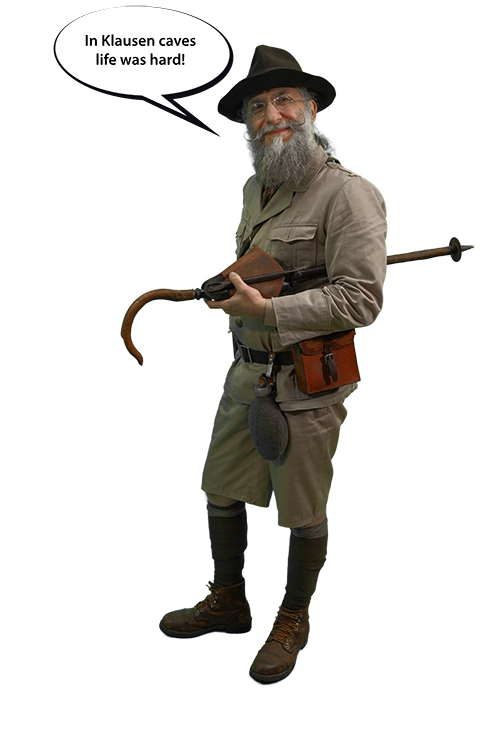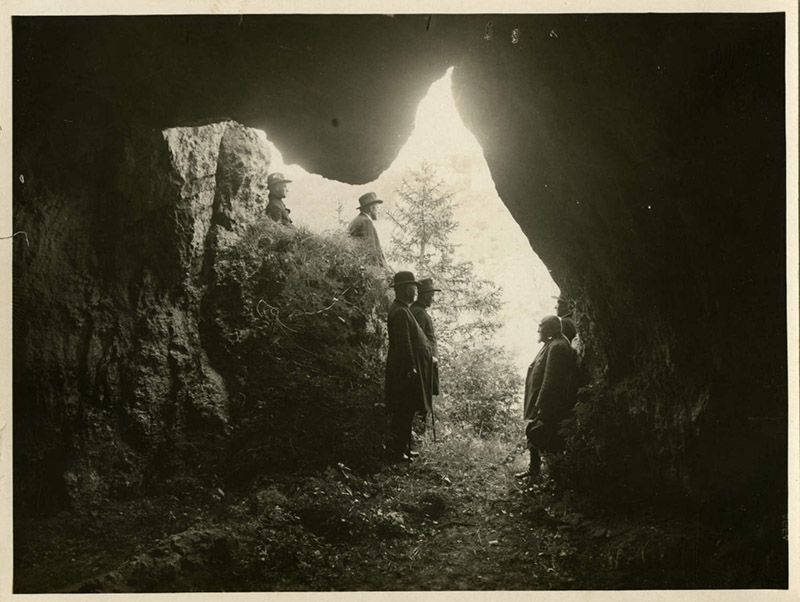Hole stick: decorated reindeer antlers – Dating: c. 18,000 to 12,000 BC – Function: unknown


“Life was hard In the Würm Ice Age, when the Klausen caves were used. People lived as hunters and gatherers. It would have been much too cold for me! The climate then was similar to that of the cold northern steppes today – the tundra. Brrrrr! People had to dress warmly and light many fires!
They hunted mammoth, woolly rhinoceros, reindeer, and later also bison, ur and horse. Furs and high energy food warmed these early ancestors of ours and perhaps also helped release creative forces. Animal drawings made by these hunters of the last Ice Age have been found on a perforated stick, on a limestone plaque and on a mammoth ivory tablet. Other objects such as harpoons and flint points also came to light during excavations.
My friend and colleague Professor Ferdinand Birkner was active here, investigating caves and antiquities. He took part in an excavation in these caves during which the oldest Cro-Magnon man (about 34 000 years old) in Germany was found. I took many photos for him but unfortunately all of them were lost. So now I am taking new photographs of the sites. My good old camera is always at my service.”


